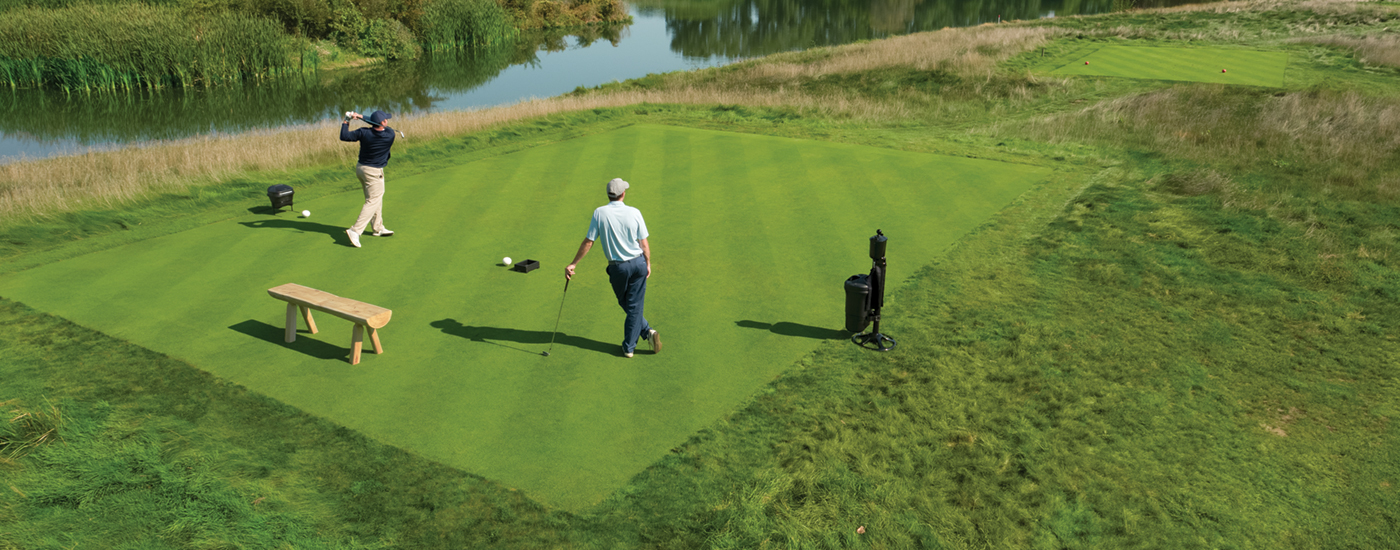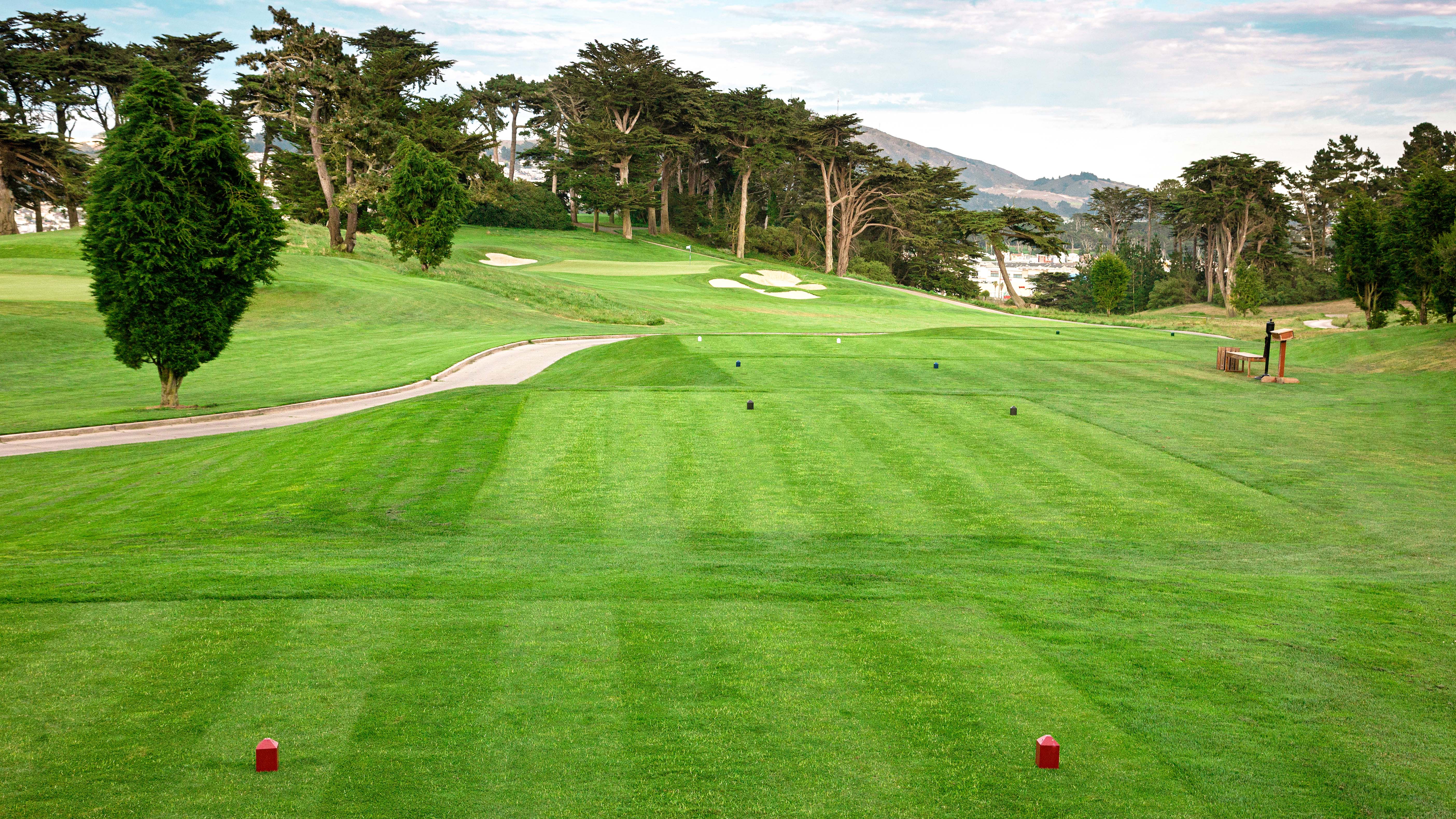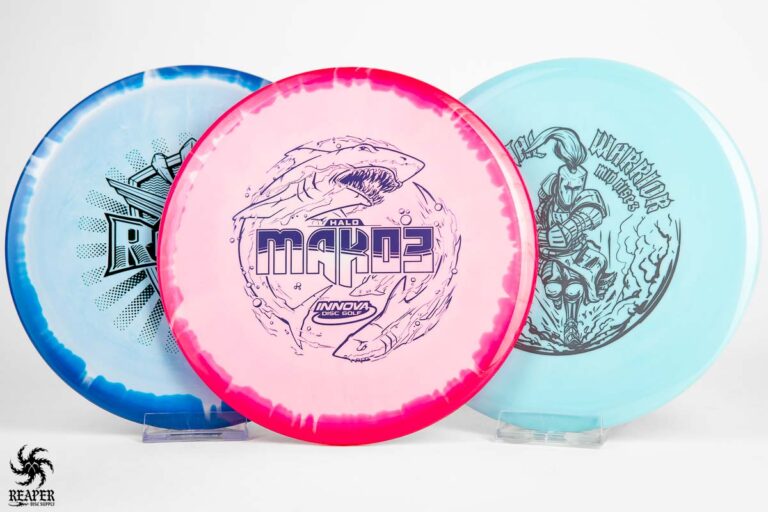A golf course tee is the starting point for each hole. Players hit their first shot from the tee box.
Golf course tees are crucial in the game of golf. They mark the spot where each hole begins and vary in placement to provide different levels of difficulty. Tees come in various colors, often indicating the length and challenge of the course.
Golfers choose tees based on their skill level and preferences. Properly maintained tees ensure a fair and enjoyable game for all players. The tee box condition, including grass quality and evenness, impacts the initial shot. Golf course designers carefully plan tee placements to enhance the overall playing experience. Understanding tees helps golfers strategize and improve their game.
Contents
Selecting The Right Tee
Selecting the right tee on a golf course is crucial for an enjoyable game. It ensures a fair challenge and matches your skill level. This guide will help you understand the different tee colors and how to choose based on your experience.
Understanding Tee Colors
Golf courses use various colors to indicate tee positions. Each color represents a different level of difficulty and distance. Understanding these colors will help you pick the right one.
- Red Tees: Typically for beginners or junior players. These are the closest to the hole.
- Gold Tees: Often used by senior players. These offer a moderate challenge.
- White Tees: Standard tees for most male golfers. These provide a balanced challenge.
- Blue Tees: For experienced golfers. These tees are further back, offering more difficulty.
- Black Tees: The farthest and most challenging. Reserved for professionals or very skilled players.
Choosing Based On Skill Level
Choosing the right tee depends on your skill level and experience. Here’s a simple guide:
| Skill Level | Recommended Tee Color |
|---|---|
| Beginner | Red |
| Intermediate | White or Gold |
| Advanced | Blue |
| Professional | Black |
Beginners should start with red tees for a smoother game. Intermediate players can choose white or gold tees for a balanced experience. Advanced players will find blue tees more challenging. Professionals should use black tees for the ultimate test.
Selecting the right tee can enhance your enjoyment and performance on the golf course. Always consider your skill level and the associated tee color before starting your game.

Credit: www.golflink.com
Pre-round Preparation
Preparing for a round of golf is crucial for success. Proper preparation helps improve your performance and enjoyment. Here are key steps to ensure you’re ready for your game.
Warm-up Exercises
Warm-up exercises are essential before hitting the golf course. They help loosen up muscles and improve flexibility. Spend at least 10 minutes warming up.
- Stretch your arms and legs.
- Do some light jogging or walking.
- Practice some gentle swings with your club.
These activities increase blood flow and reduce the risk of injury. A proper warm-up can enhance your swing and overall performance.
Course Familiarization
Understanding the golf course layout can give you an edge. Take some time to familiarize yourself with the course.
| Activity | Details |
|---|---|
| Review Course Map | Check the layout of each hole. |
| Identify Hazards | Note any water bodies or bunkers. |
| Check Yardage | Understand distances for each hole. |
Knowing these details can help you plan your shots better. This preparation can lead to a more strategic and enjoyable game.
Proper Tee Placement
Proper tee placement is crucial for a great golf game. It affects your performance on the course. Understanding the best placement can help you score better and enjoy the game more.
Evaluating Wind Direction
Always check the wind direction before setting your tee. Wind can change the ball’s path. Use a small flag or grass to judge the wind.
- Face the wind direction and feel its strength.
- Adjust your stance to balance against the wind.
- Avoid placing your tee directly into the wind.
Wind from behind can boost your shot. Side winds require more skill and adjustment.
Considering Hole Layout
Study the hole layout before placing your tee. Each hole has unique features. Consider the fairway, hazards, and green.
| Hole Feature | Consideration |
|---|---|
| Fairway | Place tee to aim for widest part. |
| Hazards | Avoid water, bunkers, and rough areas. |
| Green | Plan your shot to land closer to the green. |
Use these tips to find the best tee spot. Proper tee placement makes your game more enjoyable and successful.

Credit: www.paraide.com
Swing Techniques
Mastering swing techniques can improve your golf game significantly. This guide focuses on the key elements: grip, stance, backswing, and follow-through. Understanding these basics ensures a more consistent and powerful swing.
Grip And Stance
Your grip and stance set the foundation for a successful swing. A proper grip involves placing your hands on the club in a way that feels comfortable yet firm. The stance is equally important, as it provides balance and stability.
- Grip: Hold the club with both hands, ensuring your palms face each other.
- Stance: Stand with your feet shoulder-width apart.
- Alignment: Your toes should point towards the target.
| Aspect | Details |
|---|---|
| Grip Pressure | Firm but not tight |
| Feet Position | Shoulder-width apart |
| Body Alignment | Aligned with target |
Backswing And Follow-through
The backswing and follow-through are crucial for a powerful and accurate shot. The backswing sets up the energy needed for the shot, while the follow-through ensures the energy is transferred to the ball.
- Backswing: Rotate your shoulders and hips, keeping your eyes on the ball.
- Follow-Through: Swing through the ball, ensuring a complete follow-through.
A correct backswing creates torque in your body, leading to a powerful shot. The follow-through ensures your swing is complete, providing accuracy.
Mental Focus
On the golf course, mental focus plays a crucial role. It helps players perform their best, especially at the tee. Strong mental focus can significantly improve your game. Let’s explore some effective techniques.
Visualization Techniques
Visualization is a powerful tool in golf. It helps you see the shot before taking it. Close your eyes and imagine the ball’s flight. Picture the ball landing exactly where you want. This mental practice can boost your confidence.
Many professional golfers use visualization. It helps them stay focused and calm. Try these steps for effective visualization:
- Stand behind the ball.
- Close your eyes and take deep breaths.
- Visualize the shot from start to finish.
- Feel the club in your hands.
- Open your eyes and take the shot.
Practice this technique regularly. It can make a significant difference in your game.
Staying Calm Under Pressure
Pressure situations are common in golf. Staying calm is essential for success. Here are some tips to help you stay calm under pressure:
- Deep Breathing: Take slow, deep breaths to calm your nerves.
- Positive Self-Talk: Encourage yourself with positive thoughts.
- Stay Present: Focus on the current shot, not the outcome.
- Routine: Stick to your pre-shot routine to build consistency.
Creating a calm mindset can improve your performance. Practice these techniques to stay composed during your game.

Credit: www.usga.org
Equipment Check
Before hitting the golf course, it’s crucial to perform an equipment check. This ensures you have everything needed for a great game. Two important aspects are inspecting your clubs and choosing the right ball.
Inspecting Clubs
Your golf clubs are your tools for success. Always inspect your clubs before playing. Look for any signs of damage or wear. Check the grips, shafts, and clubheads. A small issue can impact your game.
- Examine the grips for wear or tears.
- Ensure shafts are straight and free from cracks.
- Inspect clubheads for any dents or scratches.
Use a cleaning cloth to wipe down each club. This keeps them in top condition. Regular maintenance extends the life of your clubs and improves performance.
Choosing The Right Ball
Choosing the right golf ball is essential. Different balls suit different playing styles. Consider factors like spin, distance, and control. Here’s a simple guide:
| Type of Ball | Best For |
|---|---|
| Distance Balls | Longer drives and more distance |
| Spin Control Balls | Better control and precision |
| Soft Feel Balls | Softer touch and better feel |
Test different balls to find what works best for you. A good ball can make a big difference in your game.
Etiquette On The Tee
Golf is a sport of precision and patience. Proper etiquette ensures a smooth game. On the tee, following etiquette can enhance everyone’s experience. Let’s explore the key aspects of proper etiquette on the tee.
Respecting Other Players
Respect for other players is crucial. Stand quietly while others take their shots. Avoid making noise or movements that could distract them.
- Stand still and stay silent.
- Wait for your turn patiently.
- Do not use your phone on the tee.
Maintaining Pace Of Play
Keeping a good pace of play is essential. It ensures everyone enjoys their game. Be ready when it’s your turn to hit.
- Prepare your shot while others are hitting.
- Limit practice swings to save time.
- Move quickly to your ball after hitting.
| Do | Don’t |
|---|---|
| Be ready when it’s your turn. | Take too many practice swings. |
| Respect other players’ space. | Make noise on the tee. |
| Move quickly to your ball. | Use your phone on the tee. |
Post-round Review
Completing a round of golf is just the beginning. Reviewing your performance provides valuable insights. This helps improve your game and set new goals.
Analyzing Performance
Start by reviewing your scorecard. Look at each hole you played. Identify where you excelled and where you struggled. Use a table to track your performance:
| Hole | Par | Score | Notes |
|---|---|---|---|
| 1 | 4 | 5 | Missed fairway |
| 2 | 3 | 3 | Good drive |
| 3 | 5 | 6 | Water hazard |
Analyze each shot. Note if you hit the fairway or green. Keep track of putts per hole. These metrics highlight your strengths and weaknesses.
Setting Goals For Improvement
Based on your analysis, set clear, achievable goals. Focus on areas needing improvement. For instance, if your putting needs work, aim to reduce putts per round:
- Short-term goal: Practice putting 30 minutes daily
- Long-term goal: Reduce average putts per round by 2
Use specific goals to track progress. Make adjustments as needed. Celebrate small victories along the way.
Frequently Asked Questions
How Many Tees On A Golf Course?
A golf course typically has three to five tees per hole. They vary by skill level and distance.
Why Are There Different Tees On A Golf Course?
Different tees on a golf course accommodate players of varying skill levels and provide a fair challenge for everyone.
What Does Tee Mean In Golf?
A tee in golf is a small stand used to elevate the ball for the first stroke of each hole. It helps golfers achieve cleaner, more accurate hits.
Can You Use A Tee Anywhere On The Golf Course?
No, you cannot use a tee anywhere on the golf course. Tees are only allowed on the teeing ground.
Conclusion
Choosing the right golf course tee can greatly enhance your game. It provides the perfect balance between challenge and enjoyment. Remember to consider your skill level and preferences. By selecting wisely, you’ll enjoy your golfing experience more. Happy golfing and may your swings always be perfect!





